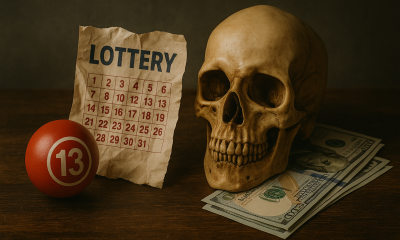Legends
The MIT Blackjack Team: Beating the House with Math

The MIT Blackjack Team is arguably the biggest card counters and blackjack strategists in history. Their exploits have been reiterated in popular culture numerous times, most notably in the 2008 film, 21. The team counted cards and beat casinos all around the world for over 2 decades, making an estimated $50 million.
Don’t think of them as the A-Team of blackjack, as the members of the team often changed, and at least 80 people are thought to have been part of the organization. Comprised of Harvard University graduates and students, the MIT Blackjack Team used precise card counting and basic strategies to overcome the house. The goal was not just to win, but also to cover their tracks. By leveraging enough time and losses along the wins, the team could sustain their enhanced game for years on end without detection.
So how did they do it?
Forming the MIT Blackjack Team
The MIT team’s story really begins with Al Francesco, the “Godfather of Blackjack“. Francesco came up with the idea of playing blackjack in teams, thus maximizing the card counting potential. He started out in the early 1970s recruiting card counters and traveling across the US. The idea was to station these professionals around various blackjack tables and patiently count cards. When one of the spotters saw an opportunity where the mathematical odds didn’t favor the house anymore, they would signal a player to come to the table.
Then, that player would place big money wagers to take full advantage of the edge, until the mathematical edge was lost or the decks were reshuffled. The player chosen to gamble would always be rotated, thus helping Francesco’s team avoid detection and banning. At their peak, they had 22 members and three “players”. But it all fell apart in 1977, when one of the players, Ken Uston, published a book, The Big Player, exposing the team’s tactics.
Francesco’s team disbanded, but their exploits inspired the MIT Blackjack Team. It all started when Bill Kaplan, a Harvard graduate with gambling experience, formed an organization of Harvard students. He helped create a discipline, organized the team, and created a professional blackjack squad. It was far more elaborate than Francesco’s team, even using investor backing and performance reviews. Kaplan’s group wasn’t just a squad of blackjack-playing students. It was very much a business model, providing salaries to players and taking backing from investors.

Exploits and Notable Members
Based in Boston, the group travelled across the world, from America to the Bahamas and Europe. They used aliases, planned itineraries and analyzed their targets to elude detection. Starting professionally in 1980, the team had an investment stake of $89,000. The original lineup had ten players, including JP Massar, “Jonathan”, “Goose” and “Big Dave”. A lot of their real names aren’t known to this day, as a lot of MIT Blackjack alumni still want to retain their anonymity.
They apparently doubled the $89,000 in the space of ten weeks. On average, they made around $170 per hour at a table. The investors made over 250% on their initial investment in that first year.
Kaplan soon became known to casino operators and had to go to great lengths to hide his identity. By 1984, he had to fall back on his regular day job, and stop participating in the games. The activities were then run by his associates, Massar, as well as Chang and Bill Rubin. Though Kaplan retained a managerial role in the team’s movements and blackjack strategies.
During the 1990s, the team reached its real peak, growing to over 80 members and hitting the biggest casinos in the country. They apparently even took over $400,000 one weekend, according to a security investigator. But the exact profit and earnings are not known. We can only rely on speculations and accounts. The group finally dissolved in 2000, after running from 1979, and making an estimated $50 million.
Strategies They Used
Even the best mathematicians and card counters eventually get caught out by casinos and have to close shop. It is notoriously difficult to spot a card counter, something any pit boss or security member can attest to. Casinos don’t really ban card counting, but they hold the right to kick anyone out of the casino, or even ban them. It is in the terms and conditions – and something you agree to as soon as you step inside a casino.
Following a basic strategy is, therefore, not enough on its own. The MIT Blackjack Team was so successful and for so long, because they knew this. And they went out of their way to avoid getting spotted by casino security personnel. Plus, they didn’t just use basic blackjack strategies. They had a team of mathematical experts and gambling strategists who used various methods to identify when the mathematical odds swung in favor of the player, and against the house.
Card Counting and Basic Strategy
The MIT team used the Hi-Lo card counting system, one of the simplest card counting methods out there. It involves using a running count, and keeping track of the True Count – a value that determines who has the edge, and to what extent. During gameplay, they would count how many higher and lower value cards had been used up. If there were more 10s and other high value cards remaining in the deck, the blackjack edge would swing in favor of the players.
Then, they could increase the bet size. Of course, as soon as the deck got reshuffled, the edge would disappear, and then they could leave or lower the stake. Not in a very obvious or direct way – just in a natural way to avoid raising suspicion. Basic blackjack strategy had to be practically second nature to the players. They needed to know when to hit, stand, surrender and double down, without a fault.

Ace Tracking and Advanced Shuffling
Some members had more specialized roles in the MIT team. They had to track Aces and try to identify where the Aces were in the decks after the shuffle. It sounds virtually impossible, but with lots of practice and expertise, you can actually become quite sharp at locating Aces. These members had to watch the dealer shuffling decks and look for where they cut the cards, and the shuffling movements. The more accurate their prediction, the better chance the players had at capitalizing on blackjacks or surrendering – depending on where the Ace would land.
Studying shuffling methods doesn’t only help in locating Aces. The MIT team could also gauge how well a dealer could manage the job and look to exploit dealers with weaker shuffling methods. It requires intense concentration and visual skills, but with the right level of skill, the MIT ace trackers and shuffling experts could quite quickly locate a good opportunity.
Concealing Their Tracks
The MIT team didn’t always win when they played blackjack. Realizing the dangers of getting spotted by casino security, the team also had to lose sometimes. Sure, you can still lose even if the maths point your way, but they also had to occasionally throw the casino off their tracks and intentionally play games with a high house edge.
Another part of covering their tracks was pinpointing precise moments where a player could walk in and take a big win. These players would disguise themselves as high rollers, and walk up to a table to bet. After just a handful of rounds, they would quit with a huge sum of money – seemingly a case of good variance or “beginner’s luck“. But the groundwork may have been hours in the making, with spotters and analysts waiting patiently for the perfect opportunity to make bank.
Can The Strategy Still Work Nowadays?
None of the methods used by the MIT team were specifically illegal or too difficult for any blackjack player to learn. They didn’t use high-tech card counting software or any other devices that could get you banned from a casino. Their methods relied on card counting and basic strategy. And, of course, they had to remain in the shadows and avoid raising any suspicions. But all of these techniques can still be used today, albeit you have to be very careful.
Back then, casino security was not as advanced as it is today. Sure, they had the Eye in the Sky and plenty of staff to monitor players. But they didn’t have AI-powered tools, facial recognition software, and data-driven solutions to identify potential card counters. Even if you avoided facial recognition detection and leveraged some losses into your play, it is next to impossible to beat the machine learning card counter detectors. These solutions make projections and simulations of our gameplay and can very precisely pinpoint whether a player is card counting or not.
But again, it is not an exact science. It relies on very specific details. Such as the sizing of your stake, the timing of your stake changes, and how you react to cards drawn. At the end of the day, it is possible to use all the same methods that the MIT Team used.

Blackjack Strategy Considerations and Concerns
One of the biggest dangers about blackjack strategies is that some players misunderstand how they work. These strategies are not meant to make you win all the time, or spot a scenario in which a win is guaranteed. Far from it. They are intended to identify circumstances that give you a higher mathematical chance of winning.
You never go all in on a blackjack strategy, even if the True Count rings in your favor. The principle is to play at the table while the edge is in your favor, and play with big stakes. In theory, you should make more money and can leave when the cards are reshuffled. Or, the True Count balances out or goes in favour of the house.
But the way blackjack is portrayed in popular culture gives some players the impression that a strategy will win regardless. It creates gambler’s biases, overconfidence, and a gambler’s conceit. You should never just assume that even if the odds are in your favor, you are guaranteed a win. Variance can still come into play, and the house can even win if the odds are against it.
So play cautiously and don’t get carried away or emotional after losses. As for pulling off a house beating strategy, it is not impossible. You can enhance your skills and become a master of spotting shuffles or pinpointing Aces. Your biggest obstacle is the card counting detector technology and AI-powered anti-cheating software.















